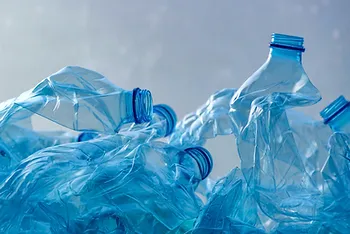Political agreement reached
On 4 March 2024, the Council and the European Parliament reached a provisional agreement on a proposal for a regulation on packaging and packaging waste, aiming to make packaging more sustainable and reduce waste in the EU.
New Packaging Regulation
The current EU directive on packaging and packaging waste was first adopted in 1994, and has been revised several times. Sets out rules for EU Member States to ensure that packaging placed on the EU market meets certain requirements, and to take measures to prevent and manage packaging waste, in order to achieve recycling targets for different types of waste of packaging. However, several evaluations of the directive have shown that it has failed to reduce the negative environmental impacts of packaging.
In this context, in November 2022 the Commission presented a proposal for a regulation on packaging and packaging waste which would replace the existing Directive. The European Parliament and the Council adopted their positions on the proposed regulation in November and December 2023 respectively.
On 4 March 2024, the Presidency of the Council and representatives of the European Parliament reached a provisional political agreement on a proposal for a regulation on packaging and packaging waste. The aim is to address the increase in packaging waste generated in the EU, while harmonizing the internal market for packaging and promoting the circular economy.
The proposal takes into consideration the entire life cycle of the packaging. It sets out requirements to ensure packaging is safe and sustainable, requiring that all packaging is recyclable and that the presence of substances of concern is minimised. It also establishes labeling harmonization requirements to improve consumer information. It aims to significantly reduce the generation of packaging waste by setting binding reuse targets, limiting certain types of single-use packaging and requiring economic operators to minimize the packaging used.
The agreement reached is provisional, awaiting formal adoption by both institutions.
If approved, the regulation will be applicable 18 months after its entry into force, with the aim of transforming Europe into a circular and sustainable economy in line with the European Green Deal.
The main measures planned:
1.Less packaging and limitation of some packaging sizes
The agreement sets packaging reduction targets (5% by 2030, 10% by 2035 and 15% by 2040) and requires EU countries to reduce, in particular, the amount of plastic packaging waste.
According to the agreement, starting from 1 January 2030, certain formats of single-use plastic packaging will be banned, such as packaging for fresh unprocessed fruit and vegetables, packaging for food and drinks filled and consumed in bars and restaurants, individual portions (e.g. for condiments, sauces, creams, sugar), miniature packaging for toiletries and shrink films for suitcases at airports.
MEPs also ensured a ban on very light plastic bags (less than 15 microns), unless they are required for hygiene reasons or are supplied as primary packaging for bulk foods to help prevent food waste.
2. Ban on the use of “forever chemicals”
To prevent negative health effects, Parliament has ensured the introduction of a ban on the use of per- and polyfluorinated alkyl substances or PFAS in packaging that comes into contact with food.
3.Encourage reuse and refill options for consumers
Negotiators agreed to set a specific target for reusable packaging for alcoholic and non-alcoholic beverages (except, for example, milk, wine, flavored wine, spirits) by 2030 (at least 10%). Member States may grant a five-year derogation from these requirements under certain conditions.
Final distributors of drinks and takeaway food in the catering sector would be obliged to offer consumers the possibility of bringing their own container. They should also strive to offer 10% of products in a reusable packaging format by 2030.
Furthermore, at the request of Parliament, Member States will have to encourage restaurants, canteens, bars, cafes and catering services to serve tap water (if available, free of charge or with a low service charge) in a format reusable or refillable.
4.Recyclable packaging, better waste collection and recycling
Negotiators agreed that all packaging must be recyclable, meeting strict criteria to be defined through secondary legislation. There are some exemptions for light wood, cork, fabrics, rubber, ceramic, porcelain or wax.
5.Other agreed measures are
– minimum recycled content targets for any plastic parts of packaging;
– minimum recycling targets based on the weight of packaging waste produced and increased recyclability requirements;
– 90% of disposable plastic and metal beverage containers (up to three litres) to be collected separately by 2029 (deposit-return systems).



